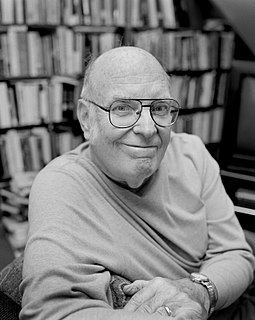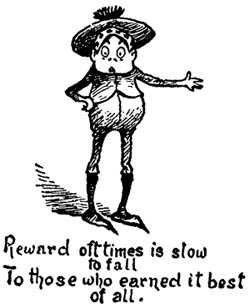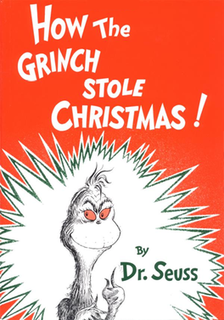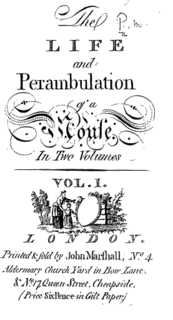
Martin Gardner was an American popular mathematics and popular science writer, with interests also encompassing scientific skepticism, micromagic, philosophy, religion, and literature—especially the writings of Lewis Carroll, L. Frank Baum, and G. K. Chesterton. He was also a leading authority on Lewis Carroll. The Annotated Alice, which incorporated the text of Carroll's two Alice books, was his most successful work and sold over a million copies. He had a lifelong interest in magic and illusion and was regarded as one of the most important magicians of the twentieth century. He was considered the doyen of American puzzlers. He was a prolific and versatile author, publishing more than 100 books.

A picture book combines visual and verbal narratives in a book format, most often aimed at young children. With the narrative told primarily through text, they are distinct from comics, which do so primarily through sequential images. The images in picture books are commonly produced in a range of media, such as oil paints, acrylics, watercolor, and pencil, among others.
Dame Helen Louise Gardner, was an English literary critic and academic. Gardner began her teaching career at the University of Birmingham, and from 1966 to 1975 was a Merton Professor of English Literature, the first woman to have that position. She was best known for her work on the poets John Donne and T. S. Eliot, but also published on John Milton and William Shakespeare. She published over a dozen books, and received multiple honours.

Eleanor Farjeon was an English author of children's stories and plays, poetry, biography, history and satire. Several of her works had illustrations by Edward Ardizzone. Some of her correspondence has also been published. She won many literary awards and the Eleanor Farjeon Award for children's literature is presented annually in her memory by the Children's Book Circle, a society of publishers. She was the sister of thriller writer Joseph Jefferson Farjeon.

Stephen Vincent Benét was an American poet, short story writer, and novelist. He is best known for his book-length narrative poem of the American Civil War, John Brown's Body (1928), for which he received the Pulitzer Prize for Poetry, and for the short stories "The Devil and Daniel Webster" (1936) and "By the Waters of Babylon" (1937). In 2009, The Library of America selected his story "The King of the Cats" (1929) for inclusion in its two-century retrospective of American Fantastic Tales edited by Peter Straub.

Henry Ernest Dudeney was an English author and mathematician who specialised in logic puzzles and mathematical games. He is known as one of the country's foremost creators of mathematical puzzles.

Raggedy Ann is a character created by American writer Johnny Gruelle (1880–1938) that appeared in a series of books he wrote and illustrated for young children. Raggedy Ann is a rag doll with red yarn for hair and a triangle nose. Gruelle received US Patent D47789 for his Raggedy Ann doll on September 7, 1915. The character was created in 1915 as a doll, and was introduced to the public in the 1918 book Raggedy Ann Stories. When a doll was marketed with the book, the concept had great success. A sequel, Raggedy Andy Stories (1920), introduced the character of her brother, Raggedy Andy. Further characters such as Beloved Belindy, a black mammy doll, were featured as dolls and characters in books.

John Barton Gruelle was an American artist, political cartoonist, children's book and comics author, illustrator, and storyteller. He is best known as the creator of Raggedy Ann and Raggedy Andy dolls and as the author/illustrator of dozens of books. He also created the Beloved Belindy doll. Gruelle also contributed cartoons and illustrations to at least ten newspapers, four major new syndicates, and more than a dozen national magazines. He was the son of Hoosier Group painter Richard Gruelle.

Van Wyck Brooks was an American literary critic, biographer, and historian.
Robert Lawson was an American writer and illustrator of children's books. He won the Caldecott Medal for his illustrations in They Were Strong and Good in 1941 and the Newbery award for his short story for Rabbit Hill in 1945.
David McKay Publications was an American book publisher which also published some of the first comic books, including the long-running titles Ace Comics, King Comics, and Magic Comics; as well as collections of such popular comic strips as Blondie, Dick Tracy, and Mandrake the Magician. McKay was also the publisher of the Fodor's travel guides.

X. J. Kennedy is an American poet, translator, anthologist, editor, and author of children's literature and textbooks on English literature and poetry. He was long known as Joe Kennedy; but, wishing to distinguish himself from Joseph P. Kennedy, he added an "X" as his first initial.
Jeremiah (Jerry) Farrell is an American professor emeritus of mathematics at Butler University in Indiana. He is well known for having designed Will Shortz's favorite puzzle, the 1996 "Election Day" crossword in The New York Times. He has also written puzzles for many other books and newspapers, such as Scott Kim's puzzle column for Discover magazine.

Letters from Iceland is a travel book in prose and verse by W. H. Auden and Louis MacNeice, published in 1937.
Richard Buckner Gruelle was an American Impressionist painter, illustrator, and author, who is best known as one of the five Hoosier Group artists. Gruelle's masterwork is The Canal—Morning Effect (1894), a painting of the Indianapolis, Indiana skyline, but he is also known for his watercolors and marine landscapes of the Gloucester, Massachusetts, area. In 1891 Indiana poet James Whitcomb Riley commissioned Gruelle to illustrate two of his more notable poems, "When the Frost is on the Punkin'" and "The Old Swimmin' Hole," which were published in Neighborly Poems (1891). Gruelle is also the author of Notes, Critical and Biographical: Collection of W. T. Walters (1895), which provides a detailed description of Baltimore industrialist William Thompson Walters's extensive art collection.

The Brownies is a series of publications by Canadian illustrator and author Palmer Cox, based on names and elements from English traditional mythology and Scottish stories told to Cox by his grandmother. Illustrations with verse aimed at children, The Brownies was published in magazines and books during the late 19th century and early 20th century. The Brownie characters became famous in their day, and at the peak of their popularity were a pioneering name brand within merchandising.

How the Grinch Stole Christmas! is a children's story by Theodor "Dr. Seuss" Geisel written in rhymed verse with illustrations by the author. It follows the Grinch, a grumpy, solitary creature who attempts to put an end to Christmas by stealing Christmas gifts and decorations from the homes of the nearby town of Whoville on Christmas Eve. Miraculously, the Grinch realizes that Christmas is not all about money and presents.

John Marshall (1756–1824) was a London publisher who specialized in children's literature, chapbooks, educational games and teaching schemes. He called himself the "Children's Printer" and children his "young friends". He was pre-eminent in England as a children's book publisher from about 1780 to 1800. After 1795, he became the publisher of Hannah More's Cheap Repository Tracts, but a dispute with her led to him issuing a similar series of his own. About 1800 Marshall began publishing a series of miniature libraries, games and picture books for children. After his death in July 1824, his business was continued either by his widow or his unmarried daughter, both of whom were named Eleanor.

Humpty Dumpty is a bimonthly American magazine for children 2 to 6 years old that takes its title from the nursery rhyme of the same name. The magazine features short stories, poems, nonfiction articles, games, comics, recipes, crafts, and more. Having been continuously produced for more than 65 years, it is one of the oldest American magazines for kids.
In a publishing career spanning 80 years (1930-2010), popular mathematics and science writer Martin Gardner (1914-2010) authored or edited over 100 books and countless articles, columns and reviews.















